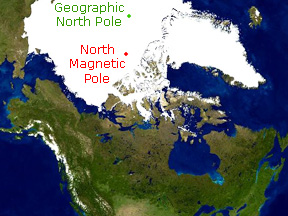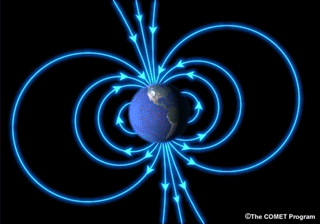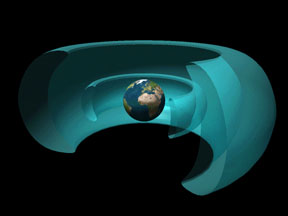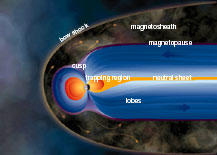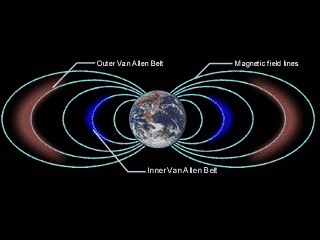Click on image for full size
Original artwork by Windows to the Universe staff (Randy Russell).
Earth's North Magnetic Pole
Earth has a magnetic field with a north pole and a south pole. Earth's magnetic field is pretty much (but not exactly) like the magnetic field around a bar magnet. Earth's North Magnetic Pole (NMP) is not in the same place as the geographic North Pole. The NMP is off the northern coast of Canada, several hundred kilometers (miles) from the geographic North Pole.
Earth's magnetic poles move around. The NMP sometimes moves 85 km (53 miles) in a single day. The NMP moves in a circle or oval each day as the Earth spins. The interplay between Earth's magnetic field and the Sun's magnetic field causes these daily motions. Over longer time periods, the NMP moves even further. It moved about 1,100 km (684 miles) during the 20th century. Right now it is headed towards Siberia, but it will probably change course before it gets there.
Compass needles point towards the NMP. Since the NMP is pretty close to the geographic North Pole, people have used compasses to find their way around for many, many years. Did you know that the NMP is really the south pole of Earth's magnetic field? What? People were using compasses for a long time before they really understood magnets. After many years they discovered that the north pole of one magnet is attracted to the south pole of another. A compass needle is a tiny magnet. The needle's north pole points toward Earth's NMP... so the NMP is really the south pole of Earth's magnetic field. Pretty confusing, huh?
Some kinds of radiation in space flow along magnetic field lines. Earth's magnetic field steers these particles towards Earth's magnetic poles. When the particles blast into our atmosphere, they make gases in the atmosphere glow. That's what causes the beautiful Northern Lights!


